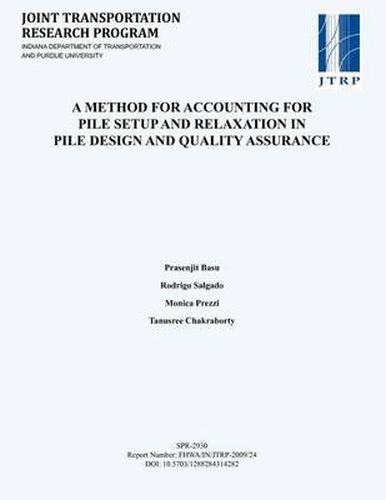Readings Newsletter
Become a Readings Member to make your shopping experience even easier.
Sign in or sign up for free!
You’re not far away from qualifying for FREE standard shipping within Australia
You’ve qualified for FREE standard shipping within Australia
The cart is loading…






When piles are installed by jacking or driving, they cause substantial changes in the state of soil located near the pile. These changes result from the complex loading imposed on the soil by expansion of a cylindrical cavity to make room for the pile, by multiple cycles of shearing in the vertical direction as the pile gradually moves down into the ground, and by the slow drainage associated with clayey soils. If a pile is load-tested a short time after installation, it will develop an axial resistance that reflects the existence in the soil of the excess pore pressures caused by the installation process. After the excess pore pressures dissipate, the axial pile resistance will be different from that measured in the short term. This difference is referred to as pile setup (if the resistance increases) or relaxation (if the resistance drops). This report focuses on the pile setup observed in clayey soils, in which it can be quite significant. Pile setup in clays result primarily from shaft resistance gains with time after installation because the base resistance contributes proportionally much less in soft to medium stiff clays, which are the focus of the research. Accordingly, our focus has been on analyzing setup in shaft resistance, validating the equations resulting from these analyses and then proposing design and quality assurance procedures based on the results of the analyses.
$9.00 standard shipping within Australia
FREE standard shipping within Australia for orders over $100.00
Express & International shipping calculated at checkout
When piles are installed by jacking or driving, they cause substantial changes in the state of soil located near the pile. These changes result from the complex loading imposed on the soil by expansion of a cylindrical cavity to make room for the pile, by multiple cycles of shearing in the vertical direction as the pile gradually moves down into the ground, and by the slow drainage associated with clayey soils. If a pile is load-tested a short time after installation, it will develop an axial resistance that reflects the existence in the soil of the excess pore pressures caused by the installation process. After the excess pore pressures dissipate, the axial pile resistance will be different from that measured in the short term. This difference is referred to as pile setup (if the resistance increases) or relaxation (if the resistance drops). This report focuses on the pile setup observed in clayey soils, in which it can be quite significant. Pile setup in clays result primarily from shaft resistance gains with time after installation because the base resistance contributes proportionally much less in soft to medium stiff clays, which are the focus of the research. Accordingly, our focus has been on analyzing setup in shaft resistance, validating the equations resulting from these analyses and then proposing design and quality assurance procedures based on the results of the analyses.